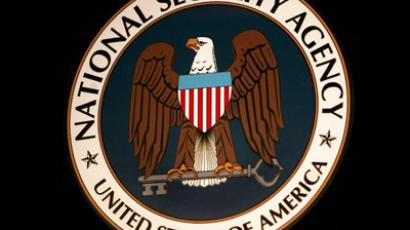TrapWire investigation links transit systems and Anonymizer in global surveillance network

The facts behind TrapWire continue to surface in the days since WikiLeaks exposed the state-of-the-art surveillance system, but minute-by-minute more is being revealed about not just the scary intelligence infrastructure but its questionable ties.
Last week, WikiLeaks published their latest addition to trove of the so-called Global Intelligence Files — emails uncovered from Texas-based Strategic Forecasting (Stratfor) by Anonymous late last year — in turn revealing a widespread surveillance system blanketing much of the United States and abroad. The project, TrapWire, is the brainchild of Abraxas, a Northern Virginia corporation that has cut countless deals with the federal government and is staffed by former agents out of not just the Pentagon but practically every leading intelligence agency in the country. As those connections are examined under a magnifying glass by researchers and hacktivists alike, though, more and more is being brought to light about the correlations that exist between the biggest of brothers and an entire industry that profits from pulverizing what is left of privacy. In addition to Abraxas overseeing perhaps the most-secret and advanced surveillance system in the world, other entities directly connected to the company have a monopoly in America’s mass-transit system and have also advertised themselves as the purveyors behind a tool designed to protect the privacy of US citizens. Much remains unknown about the actual technology behind TrapWire, but Abraxas founder Richard Helms explained it in a 2005 interview as being “more accurate than facial recognition.” A system of surveillance cameras in select locales across the world are connected to analysis centers that aggregate other data, which can be combined to examine suspicious activity reports and routinely monitor every move across vast areas of public space. Publically available information links the TrapWire system to projects in New York, Washington, DC, Los Angeles and Las Vegas, among others, but the ties beyond just that one Abraxas endeavor open the operation up to an infinite number of possibilities.San Diego-based Cubic Corporation acquired Abraxas in 2010 for only $124 million in cash, close to the same amount that the US Department of Homeland Security and Department of Defense awarded the contractor during just the last 11 months. Within the vast Cubic empire exist other facets, though, ones that could very well be working hand-in-hand with what is quickly unfolding as one of the best-kept law enforcement operation secrets ever.Included in the sale of Abraxas to Cubic in 2010 was Anonymizer, described by its publicists as “the leader in consumer online anonymity solutions.” Anonymizer exists under the alleged platform of providing identity masking while making communiqué and clandestine transactions over the Web, and its then-newly-hired vice president for consumer products, Chaminda Wijetilleke, said in 2010, “As the online privacy space continues to mature, Anonymizer is in a great position to increase its lead in the industry and to be at the forefront of bringing innovative products to market.”“Consumers need state-of-the-art solutions to protect themselves from relentless threats to their online privacy,” added Wijetilleke, who went on to add, “I’m excited to join the Anonymizer team and to help drive this evolving business forward.” In Cubic’s acquisition of Abraxas and Anonymizer, though, real life privacy may have been put under immense risk thanks to TrapWire.TrapWire was first unraveled in the wake of the September 11 terrorist attacks by Abraxas back in 2004, and a decade down the road their connections within the private sector have surpassed more than just counterterrorism companies. In addition to being now under the same umbrella is Anonymizer, its parent company, Cubic, manages a massive transportation division that is reported to be the world’s leader in terms of automated fare collection cards and its related infrastructure in mass-transit systems across the globe. Cubic confirms on their own website that, “Over the past decade, Cubic has implemented more than 80 percent of the major smart card systems in the U.S. now active today,” including network in New York, DC, Los Angeles and Chicago. And although no written connection has been discovered in only the few days since TrapWire was exposed, researchers are on the ready to point out what these systems can do when combined with one another.Through Cubic’s transportation division, customers can use identity-linking credit cards to purchase unique fare tickets that grant them access to the biggest metro systems in the United States. Once walking away from the ticket machine, though, those same passengers are placed under surveillance in certain markets that not just rely on Cubic for their metro fare needs, but use TrapWire to track suspicious activity.According to a 2009 GIF email believed to be from Stratfor Vice President for Intelligence Fred Burton, the intelligence officer writes, “TrapWire is a technology solution predicated upon behavior patterns in red zones to identify surveillance. It helps you connect the dots over time and distance.” In 2011, Burton allegedly writes that the same surveillance system can be used to “[walk] back and track the suspects from the get go w/facial recognition software.” When combining the state-of-the-art face-tracking with the same technology that can tell you the precise location and time that a person is performing a financial transaction at a Cubic machine, the company’s control over certain cities is almost all-encompassing. In one email alleged to have come from Strafor VP Burton in November 2011, he writes of TrapWire coverage in DC that “National Park Police have approached us for a proposal to cover all of the Mall area – in addition to the Fed and Military sites already covered.”“Our network there is growing almost daily,” the email reads. In terms of TrapWire’s blanketing of New York, Burton writes in a separate email that the “NYPD has done what no US Govt Agency has been able to do” in the counterterrorism arena because of TrapWire. How, exactly, the company creates profiles of suspicious persons using state-of-the-art surveillance and an endless array of mysterious information remains a matter yet to be made public.















